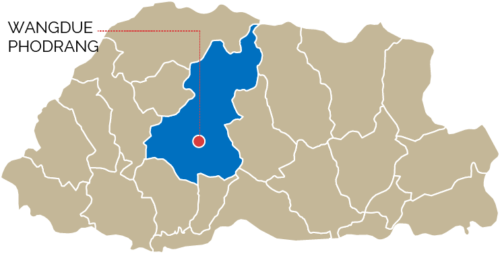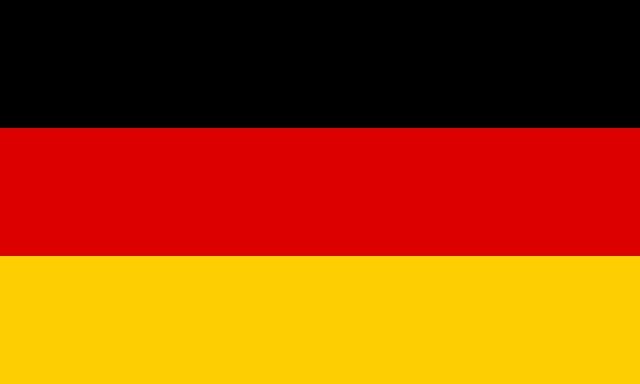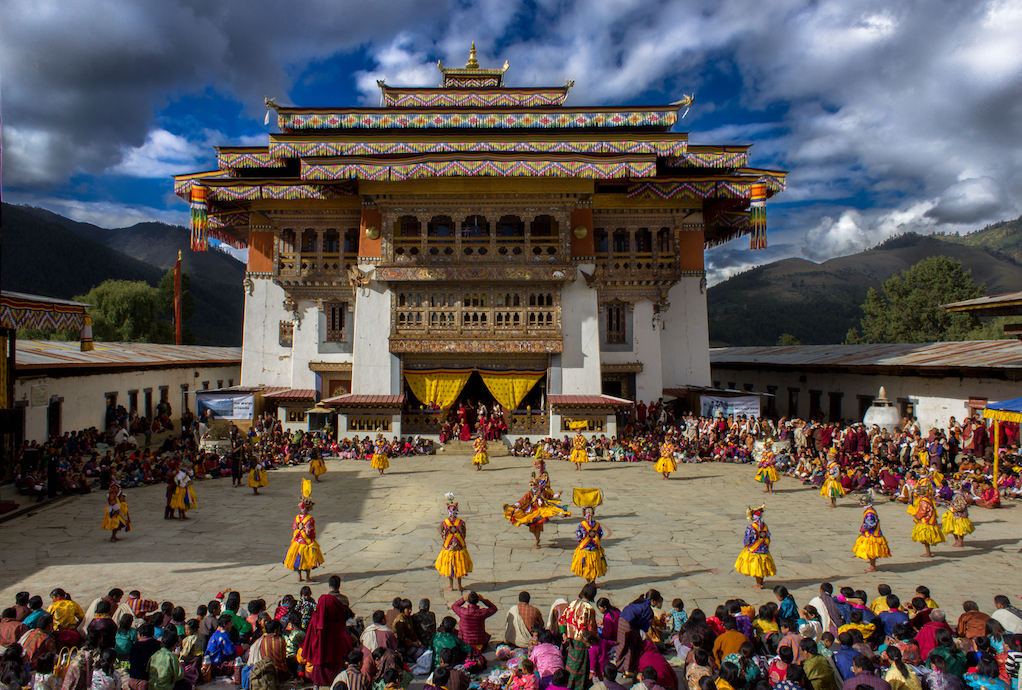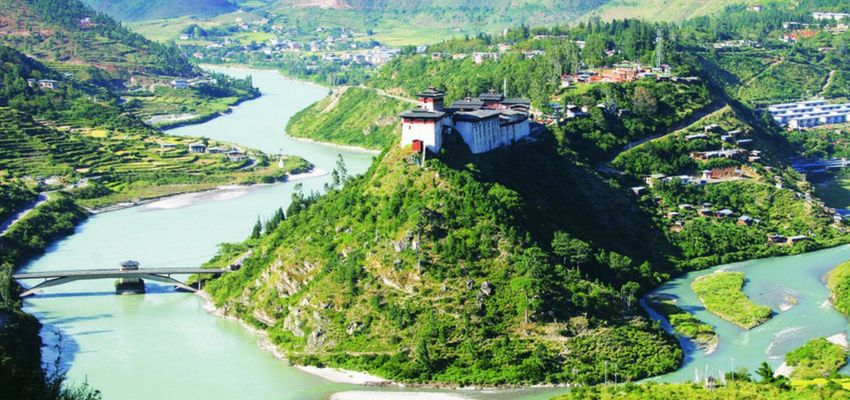WANGDUE PHODRANG

Wangdue Phodrang is one of the largest dzongkhags in the country. As the district covers 4,308 sq. km and ranges from 800-5800 m in altitude, it has extremely varied climatic conditions ranging from subtropical forests in the south to cool and snowy regions in the north.
Most of Wangdue Phodrang District is environmentally protected. The northern half of the district falls within the Wangchuck Centennial Park, with northwestern pockets belonging to Jigme Dorji National Park. Southeastern Wangdue is part of Jigme Singye Wangchuck National Park. Also protected are the biological corridors crisscrossing the district that connect Bhutan’s extensive national park system. The dominant language in the region is Dzongkha, spoken in the western two-thirds of the district. Communities along the border with Bumthang District in the northeast speak Lakha. Along the same border, in central Wangdue Phodrang, inhabitants speak Nyenkha. In the southeast region, remnants of the autochthonous ‘Olekha (Black Mountain Monpa) speaking community barely survive.
One of the most notable sites in the district is Phobjikha Valley. This valley is the habitat of the rare and endangered Black Necked Cranes that roost there during their annual migrations. The residents of the valley have garnered much acclaim for their conservation efforts to preserve the habitat of these beautiful birds. Every year the Black Necked Crane Festival is held in Phobjikha in order to protect and spread awareness of the cranes. The festival includes songs, masked dances and plays by the local school children. This event is one of the most unique and popular festivals in the country.
With its diverse climates and rich natural resources, Wangdue Phodrang Dzongkhag is home to many rare and exotic animals like Red Pandas, Tigers and Leopards. There are also large numbers of rare birds such as the Black Necked Crane, White-Bellied Heron and the Spotted Eagle.
THINGS TO DO
Gangte Goemba enjoys the valley’s prime chunk of real estate, on a forested hill overlooking the green expanse of the entire Phobjikha valley. The extensive complex consists of the central goemba, monks’ quarters, a small guesthouse and outlying meditation centres.During a visit to the Phobjikha valley, the 15th-century treasure-finder Pema Lingpa prophesied that a goemba named gang-teng (hilltop) would be built on this site and that his teachings would spread from here. Pema Thinley, the grandson and reincarnation of Pema Lingpa, built a Nyingma temple here in 1613, and the larger goemba was built by the second reincarnation, Tenzing Legpey Dhendup. The current Gangtey trulku (reincarnation), Kunzang Pema Namgyal, is the ninth reincarnation of the ‘body’ of Pema Lingpa.The tshokhang (prayer hall) is built in the Tibetan style with eight great pillars, and is one of the largest in Bhutan. The inner sanctum houses the funeral chorten of founder Tenzing Legpey Dhendup. Much of the interior and exterior woodwork of the 450-year-old goemba was replaced between 2001 and 2008 due to a beetle-larvae infestation. A three-day tsechu is held here from the eighth to 10th day of the eighth lunar month (September/October), with cham (religious dances) and the hanging of a large thondrol on the final day.The long white building on the hill to the north of the goemba is Kuenzang Chholing , a drubdey (retreat and meditation centre for monks). The normal period of meditation is three years, three months and three (sometimes seven) days, during which time the monks remain inside and eat food passed in to them by another monk.
The Wangdue Phodrang dzong was founded by the Zhabdrung in 1638 atop a high ridge between the Punak Tsang Chhu and the Dang Chhu, clearly chosen for its commanding view of the valleys below. Legend relates another reason for choosing this spot: as people searched for a site for the dzong, four ravens were seen flying away in four directions. This was considered an auspicious sign, representing the spreading of religion to the four points of the compass. Wangdi is important in the history of Bhutan because in the early days it was the country’s second capital. After Trongsa Dzong was established in 1644, the penlop of Wangdue Phodrang became the third most powerful ruler, after the penlops of Paro and Trongsa. The dzong’s strategic position gave the penlop control of the routes to Trongsa, Punakha, Dagana and Thimphu. Sadly the dzong caught fire (believed to be the result of an electrical fault) on 24 June 2012 and was virtually destroyed save for the lower walls. Almost immediately funds were raised for its restoration and the first steps of this mammoth task were underway at the time of writing. The Guru Tshengye Thondrol, depicting Guru Rinpoche, is unfurled here each year in the early hours of the final day of the autumn tsechu festival. While the dzong is being rebuilt the tsechu will be held on a field at the nearby Army Training Centre.






